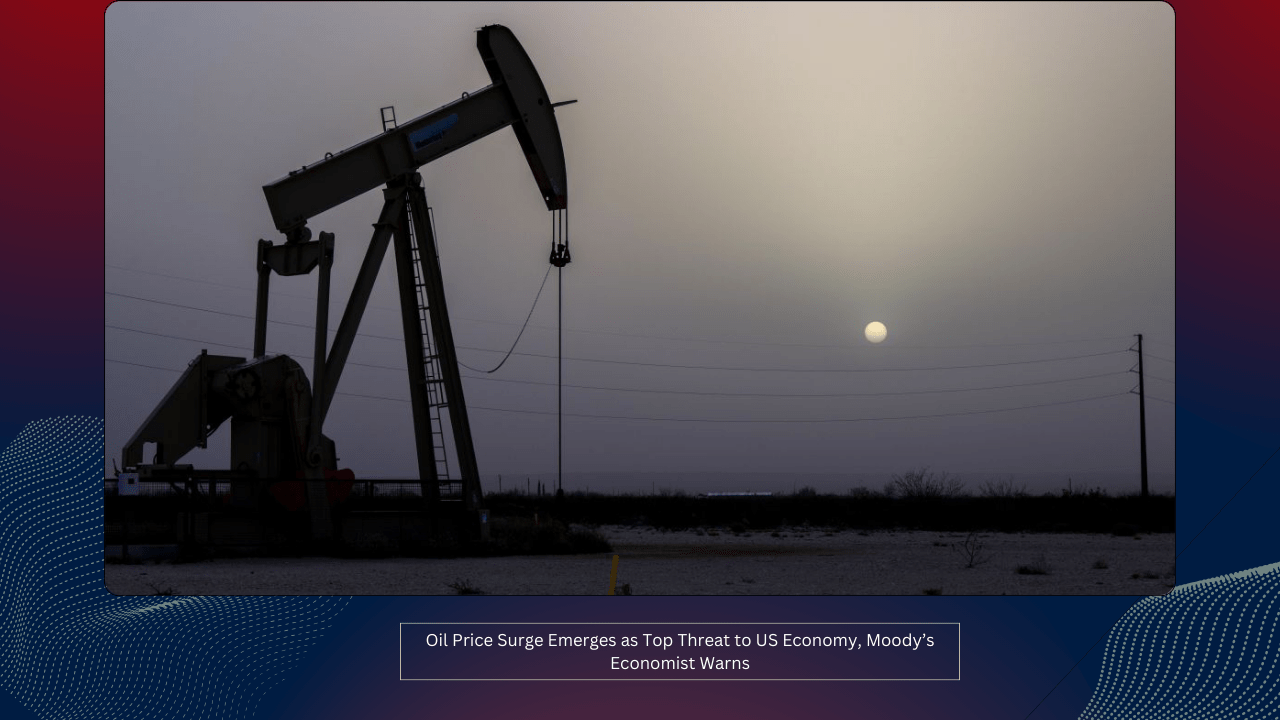
Oil Price Surge Emerges as Top Threat to US Economy, Moody’s Economist Warns
The United States economy continues to show robust growth, with a thriving job market and strong consumer spending. However, a looming threat casts a shadow over this economic prosperity: the surge in oil prices.
Rapidly approaching $90 a barrel for US oil and flirting with $92 a barrel globally, escalating oil prices pose significant challenges. This surge has propelled gasoline prices to their highest levels in five months, raising concerns about its impact on consumer spending and inflation.
Mark Zandi, chief economist at Moody’s, underscored the severity of the situation, highlighting that higher oil prices could swiftly damage the economy. He emphasized the detrimental effects on consumer spending and inflation, which could prompt the Federal Reserve to delay interest rate cuts, unsettling investors.
Moreover, the political ramifications of soaring gasoline prices could be substantial, potentially influencing the November election outcome. Zandi suggested that if gasoline prices exceed $4 a gallon for an extended period, it could bolster the prospects of former President Donald Trump.
The surge in oil prices has been primarily driven by geopolitical tensions, particularly in the Middle East. Recent events, including drone attacks in Russia and airstrikes in Syria, have heightened concerns about potential supply disruptions. Experts warn that further escalation could push oil prices even higher, possibly reaching $100 a barrel.
Joe Brusuelas, chief economist at RSM, highlighted geopolitical tensions in the Middle East as the greatest external risk to the US economy, citing their potential to elevate oil and gasoline prices significantly. However, he noted that a recession would likely only materialize if oil prices soared to around $115 to $130 per barrel.
Amidst these challenges, the Federal Reserve faces the delicate task of managing inflationary pressures while supporting economic growth. Vincent Reinhart, chief economist at Dreyfus and Mellon, anticipates interest rate cuts in June to preemptively address inflation concerns ahead of the election season.
Despite the mounting risks, some experts maintain cautiously optimistic outlooks. Andy Lipow of Lipow Oil Associates anticipates a gradual increase in gasoline prices but remains cautious about reaching $4 a gallon nationally. Similarly, Patrick De Haan, head of petroleum analysis at GasBuddy, believes that unless significant disruptions occur, a national average of $4 per gallon is not imminent.
As the situation unfolds, stakeholders closely monitor oil and gasoline price movements and their implications for economic stability. The Federal Reserve’s response and energy market dynamics will play crucial roles in navigating these challenges and sustaining economic momentum.
By staying abreast of developments and implementing proactive measures, policymakers aim to mitigate risks and safeguard the resilience of the US economy in the face of oil price volatility.

